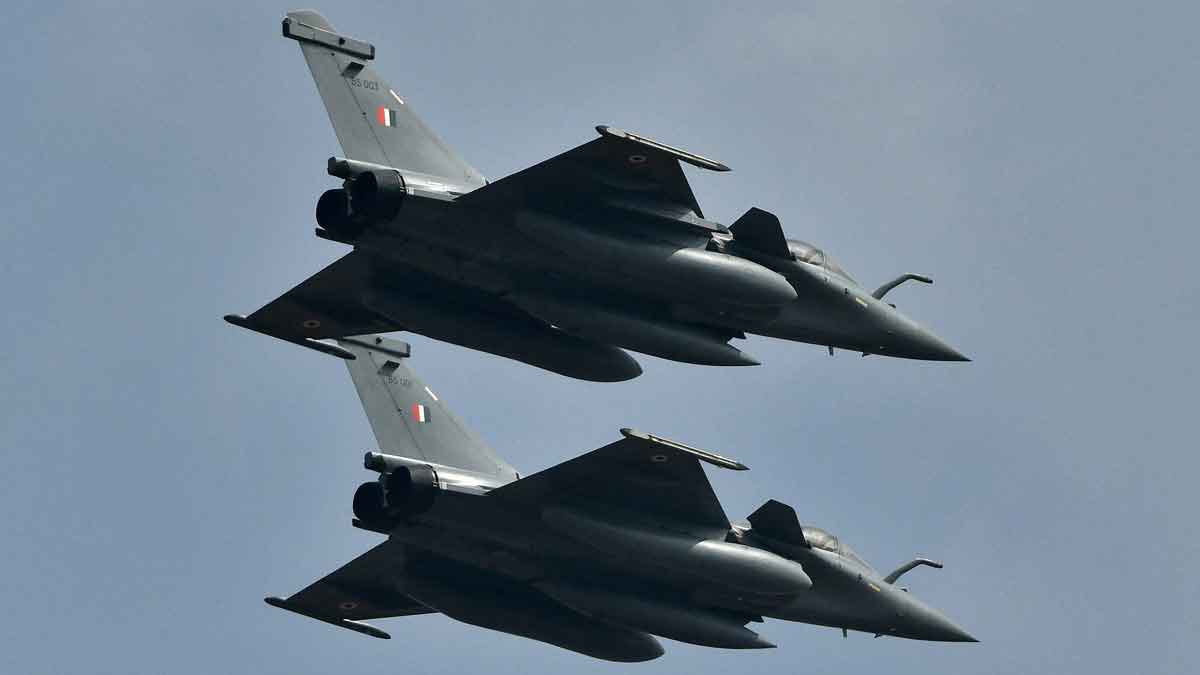Operation Sindoor: Was IAF’s proposed war game on India-Pak border a tactic to distract Pakistan?
 (FILE) Indian Air Force's Rafale fighter jets fly past at Yelahanka air base in Bengaluru, India | Reuters
(FILE) Indian Air Force's Rafale fighter jets fly past at Yelahanka air base in Bengaluru, India | Reuters
Pakistan were caught napping yet again, as India launched Operation Sindoor in the intervening night of May 6-7, striking nine terror locations in Pakistan and Pakistan-Occupied Kashmir.
The precision strikes were carried out on strongholds of Jaish-e-Mohammad, Lashkar-e-Taiba and Hizbul Mujahideen, in response to the deadly Pahalgam terror attack on April 22 in which 26 tourists and a local horse ride operator were killed.
The targets included Markaz Subhan Allah at Bahawalpur, Sarjal at Tehra Kalan, Markaz Abbas in Kotli and Syedna Bilal camp in Muzaffarabad, of the JeM; Markaz Taiba at Murdike, Markaz Ahle Hadith at Barnala and Shwawai Nalla camp at Muzaffarabad of the LeT, and Makaz Raheel Shahid in Kotli and Mehmoona Joya in Sialkot of the Hizbul Mujahideen.
A day before the Operation Sindoor was launched, India had announced a large-scale military drill along the Indo-Pak border today, featuring fighter jets Su-30 MKI, Rafale, Jaguar, MiG-29, Mirage-2000, Tejas and AWACS (Airborne Warning and Control System) among others. A Notice to Airmen (NOTAM) was issued by the civil aviation authorities for the air exercise, which was to take place along the southern and western sections of the India-Pakistan border.
The drills were to begin at 9pm today and end at 3am on Friday, and during the military drill, the IAF jets were to simulate enemy targets on the ground and in the air and hit them with deadly precision.
However, Operation Sindoor was launched at 1:44am on May 7, catching Pakistan off-guard. The strikes on all nine targets – four are in Pakistan and the remaining five are in PoK – were successful.
Earlier, Prime Minister Narendra Modi had entrusted the armed forces with "complete operational freedom" to decide on the mode, targets and timing of India's response to the Pahalgam terror attack. Air Chief Marshal A.P. Singh had met PM Modi on Sunday and briefed him about the IAF's operational readiness.
Sources said the terror headquarters of Jaish-e-Mohammad in Bahawalpur and Lashkar-e-Taiba in Muridke were destroyed successfully, making this operation much more impactful than earlier surgical strikes by India. In the Balakot strike in 2019 and strikes in PoK after Uri in 2016, only terror camps were targeted.
It was business as usual for PM Modi yesterday, conducting meetings and also attending a media event. It brought back memories of his demeanour ahead of the Balakot strikes in 2019 in response to the Pulwama terror attack which killed more than 40 Indian security personnel. On February 25, a day ahead of the Balakot strikes, Modi dedicated the National War Memorial to the nation in New Delhi and went about his official duties as usual. He also spoke at a summit even as the strike was being launched at night.
Six years down the line, it was deja vu, as Modi talked about India’s economic aspirations, at a media event. Hours later, India carried out the strikes on nine terror sites in Pakistan and PoK.
Defence